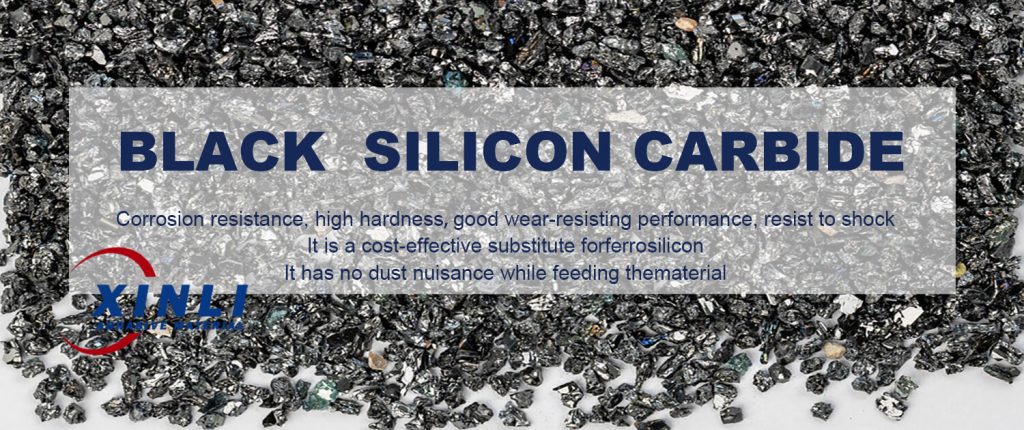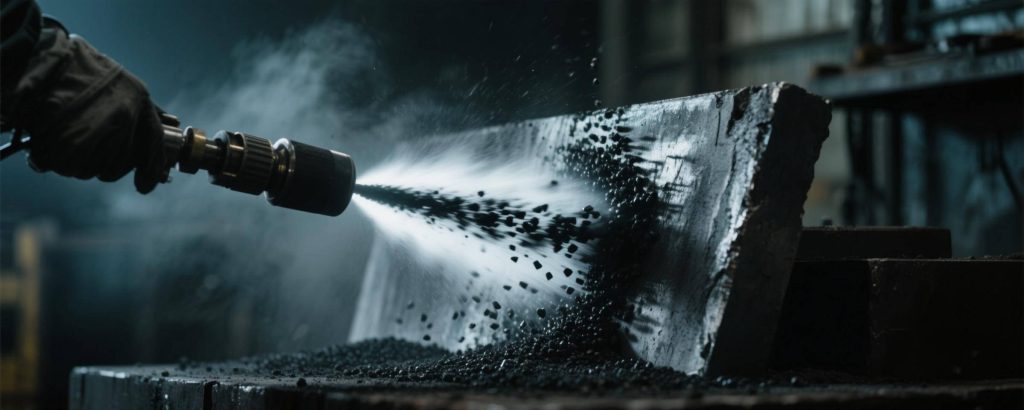Introduction to black silicon products and their application in sandblasting
Black silicon is a functional silicon material with a special surface structure, named for its extremely strong light absorption ability and unique micro-nano surface morphology. In recent years, with the improvement of surface treatment accuracy and material performance requirements in high-end manufacturing, black silicon has been widely used in photovoltaics, optoelectronics, semiconductors, optical component manufacturing and other fields with its excellent physical and chemical properties. At the same time, black silicon has gradually entered the surface sandblasting industry and has become a new type of sandblasting material with excellent performance.

Ⅰ. Basic characteristics of black silicon
Black silicon is formed by treating the silicon surface through a series of micro-nano structure preparation technologies (such as reactive ion etching, metal-assisted chemical etching, laser-induced etching, etc.). Its surface presents a dense cone or columnar structure, which can significantly reduce the reflectivity of light. The reflectivity in the visible to near-infrared band can even be less than 1%, so it is dark black in appearance.
Black silicon not only has excellent optical properties, but also has the advantages of high hardness, high purity, wear resistance, and corrosion resistance. Its particle structure is strong and suitable for multiple cycles under high-speed impact conditions. It performs better in sandblasting than traditional abrasives such as white corundum, brown corundum, quartz sand, etc.
Ⅱ. Advantages of black silicon in sandblasting
 Sandblasting is a surface treatment method that uses high-speed sand flow to impact the surface to achieve cleaning, removal of oxide layer, roughening or decorative effects. As a high-performance abrasive, black silicon has obvious advantages in the field of sandblasting:
Sandblasting is a surface treatment method that uses high-speed sand flow to impact the surface to achieve cleaning, removal of oxide layer, roughening or decorative effects. As a high-performance abrasive, black silicon has obvious advantages in the field of sandblasting:
1. Fine and uniform surface effect
The geometric structure of black silicon particles is regular and the morphology is stable. After spraying, it can form a uniform and consistent matte effect on the surface of the workpiece. This treatment effect is particularly suitable for products such as optical glass, housing, aluminum alloy structural parts, etc. that have extremely high requirements for surface consistency and appearance.
2. High hardness and impact resistance
The Mohs hardness of black silicon is as high as 8.5 or above, the breakage rate during sandblasting is low, and the service life is long. Compared with ordinary quartz sand or glass beads, black silicon sandblasting is more efficient and has stronger impact force, and can complete deep cleaning and roughening in a short time.
3. High purity and environmental protection
The purity of black silicon is usually above 99%, and it does not contain harmful impurities such as free silicon or heavy metals. It has low dust pollution in the sandblasting workshop and is especially suitable for use in high-cleanliness industries such as electronic components, medical devices, and semiconductor packaging. At the same time, its particle shape is stable, dust generation is small, and it is safer for the health of operators.
4. Reusable and cost-controllable
Due to its high hardness and structural stability, black silicon can still maintain a good spraying effect after multiple cycles, greatly reducing material loss. In large-scale automatic sandblasting equipment, black silicon shows better economy.
Ⅲ. Typical application areas
Black silicon sandblasting abrasives have been widely used in the following fields:
Precision hardware surface matte treatment: such as high-end mobile phone middle frame, notebook shell, smart watch shell and other aluminum alloy products;
Optical glass frosting treatment: used for glass, filter, optical window matte and decoration;
Aerospace and military parts: remove the oxide layer without changing the size to improve the coating adhesion;
Electronic package surface etching: improve packaging accuracy and interface adhesion;
Ceramic and composite material micro-sandblasting: surface roughening treatment to enhance bonding strength.
Ⅳ. Summary
With the continuous development of sandblasting technology and the manufacturing industry moving towards higher precision and higher environmental protection, traditional sandblasting materials can no longer meet the needs of high-end processes. Black silicon, as a functional abrasive with high strength, low reflection, high purity and environmental protection, is becoming an important upgrade material in the sandblasting industry. Whether in precision manufacturing, optical matte, or in electronic device processing, aerospace equipment surface pretreatment and other fields, black silicon has shown broad application prospects.
